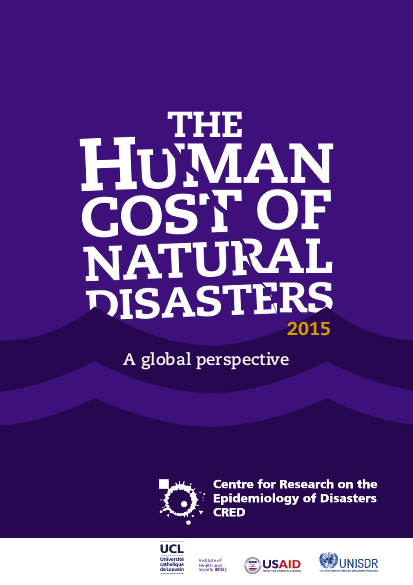
Between 1994 and 2013, EM-DAT recorded 6,873 natural disasters worldwide, which claimed 1.35 million lives or almost 68,000 lives on average each year. In addition, 218 million people were affected by natural disasters on average per annum during this 20-year period. In CRED’s view, EM-DAT data presented in this report point to several major conclusions:
• Rising death rates at a time when the numbers of people affected are falling highlights the continued vulnerability of communities to natural hazards. Given the accuracy of today’s weather forecasting and developments in early warnings, our data raise questions about the effectiveness of global disaster mitigation efforts. We believe more work must be done to evaluate the real outcomes of disaster risk reduction (DRR) interventions on human lives and livelihoods.
• In view of the disproportionate burden of natural hazards in lower-income countries, including the huge disparity in death rates in richer and poorer countries, mitigation measures in less developed countries require significant improvement.
• Better flood control for poorer communities at high risk of recurrent flooding would be an important step in the right direction. Effective, low-cost solutions exist, including afforestation, floodplain zoning, building embankments, better warnings and restoration of wetlands. Such actions would bring development benefits too, since EMDAT data show that flooding is the main cause of disaster damage to schools, hospitals and clinics etc. in lower-income countries.
• In light of predictions that climate change will increase the frequency of storms and other extreme weather events, better management, mitigation and deployment of storm warnings could save more lives in future.
• Reducing the size of drought-vulnerable populations should be a global priority over the next decade, given the effectiveness of early warnings and the vast numbers of people affected, particularly in Africa.
• Better research into how and why households and communities are affected by disasters is urgently needed so that responses are based on evidence, rather than assumptions. Without such micro-level research, future DRR and disaster prevention will not be effective.